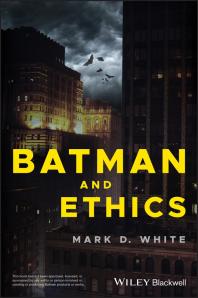

 1984 : the graphic novel
by
1984 : the graphic novel
by
 Totalitarian language : Orwell's Newspeak and its Nazi and communist antecedents
by
Totalitarian language : Orwell's Newspeak and its Nazi and communist antecedents
by
Giroux, Henry A. “Totalitarian Paranoia in the Post-Orwellian Surveillance State.” Cultural Studies, vol. 29, no. 2, Mar. 2015, pp. 108–40. EBSCOhost, https://doi.org/10.1080/09502386.2014.917118.
González, Ana Valverde. “From the Ministry of Truth to the Filter Bubble: Manipulation of Discourse in 1984 and The Loudest Voice.” Forum for World Literature Studies, vol. 14, no. 1, Mar. 2022, pp. 97–117. EBSCOhost, research.ebsco.com/linkprocessor/plink?id=0d8065ac-9cf9-33be-b0ea-7631f031a733.
Giroux, Henry A. “Trump’s America: Rethinking 1984 and Brave New World.” Monthly Review: An Independent Socialist Magazine, vol. 69, no. 1, May 2017, pp. 20–40. EBSCOhost, https://doi.org/10.14452/MR-069-01-2017-05_2.
 Anime from Akira to Howl's moving castle : experiencing contemporary Japanese animation
by
Anime from Akira to Howl's moving castle : experiencing contemporary Japanese animation
by
Li, Qiao, Edwin L. Tan, and Jianhua Yang. "Joseph Campbell’s Oriental mythology in Ghost in the Shell (1995) and Occidental mythology in Ghost in the Shell (2017)." Humanities and Social Sciences Communications 10.1 (2023): 1-10.
Tong, Donna T. “Dis/Corporatization: The Biopolitics of Prosthetic Lives and Posthuman Trauma in Ghost in the Shell Films.” Imaginations Journal, vol. 10, no. 2, Oct. 2019, pp. 119–52. EBSCOhost, https://doi.org/10.17742/image.oi.10.2.5.
Wong Kin Yuen. “On the Edge of Spaces: ‘Blade Runner’, ‘Ghost in the Shell’, and Hong Kong’s Cityscape.” Science Fiction Studies, vol. 27, no. 1, 2000, pp. 1–21. JSTOR, http://www.jstor.org/stable/4240846. Accessed 23 Aug. 2025.
Daliot-Bul, Michal. “Ghost in the Shell as a Cross-Cultural Franchise: From Radical Posthumanism to Human Exceptionalism.” Asian Studies Review, vol. 43, no. 3, Sept. 2019, pp. 527–43. EBSCOhost, https://doi.org/10.1080/10357823.2019.1631257.
Carl Silvio. “Refiguring the Radical Cyborg in Mamoru Oshii’s ‘Ghost in the Shell.’” Science Fiction Studies, vol. 26, no. 1, 1999, pp. 54–72. JSTOR, http://www.jstor.org/stable/4240752. Accessed 23 Aug. 2025.
“How Ghost in the Shell’s Dying City Helps to Articulate Its Concept of Life.” Sabukaru, sabukaru.online/articles/how-ghost-in-the-shells-dying-city-helps-to-articulate-its-concept-of-life.
 The handmaid's tale
by
The handmaid's tale
by
 Reproductive acts : sexual politics in North American fiction and film Latimer, Heather.
by
Reproductive acts : sexual politics in North American fiction and film Latimer, Heather.
by
Tabuyo-Santaclara, Sara. “Abortion Bans and Handmaid Protests: The Connectedness of The Handmaid’s Tale to the Disruption of Reproductive Rights.” International Journal of English Studies, vol. 24, no. 1, Jan. 2024, pp. 135–51. EBSCOhost, https://doi.org/10.6018/ijes.558371.
Sharma, Shikha. “Dystopian Societal Vision and Problem of Female Identification in Margaret Atwood’s The Handmaid’s Tale.” IUP Journal of English Studies, vol. 17, no. 4, Dec. 2022, pp. 41–50. EBSCOhost, research.ebsco.com/linkprocessor/plink?id=793b5f36-6b9e-375c-9eec-08a0167f6b7f.
 Batman and philosophy : the dark knight of the soul
by
Batman and philosophy : the dark knight of the soul
by
 Batman and Ethics
by
Batman and Ethics
by
Blackmore, Tim. “The Dark Knight of Democracy: Tocqueville and Miller Cast Some Light on the Subject.” Journal of American Culture (01911813), vol. 14, no. 1, Mar. 1991, pp. 37–56. EBSCOhost, https://doi.org/10.1111/j.1542-734x.1991.00037.x.
Cortiel, Jeanne, and Laura Oehme. "The Dark Knight’s dystopian vision: Batman, risk, and American national identity." European journal of American studies 10.10-2 (2015).
This essay argues that Frank Miller’s Batman: The Dark Knight Returns (1986) and Batman: The Dark Knight Strikes Again (2001-02) are grounded in a specific type of anticipatory consciousness that we read as risk consciousness. With their sustained and systematic confrontation of risk discourses, the two graphic narratives can be seen as key examples of what we call risk fiction, that is fictional engagements with and expressions of global risks that are the products of late modernity.